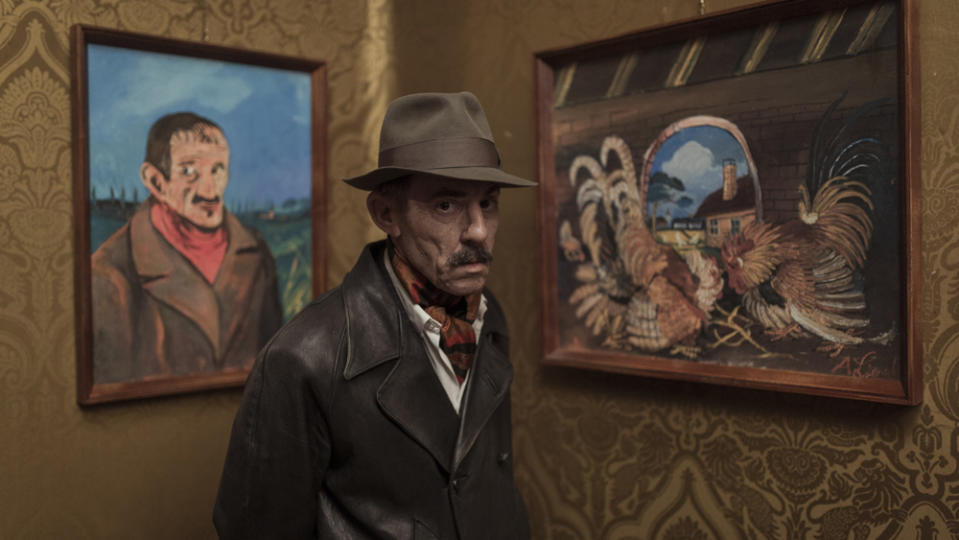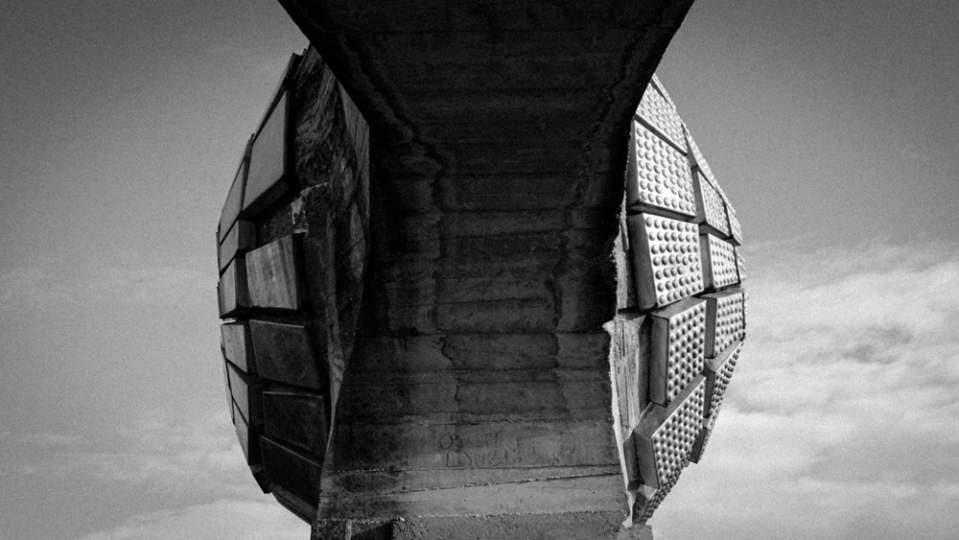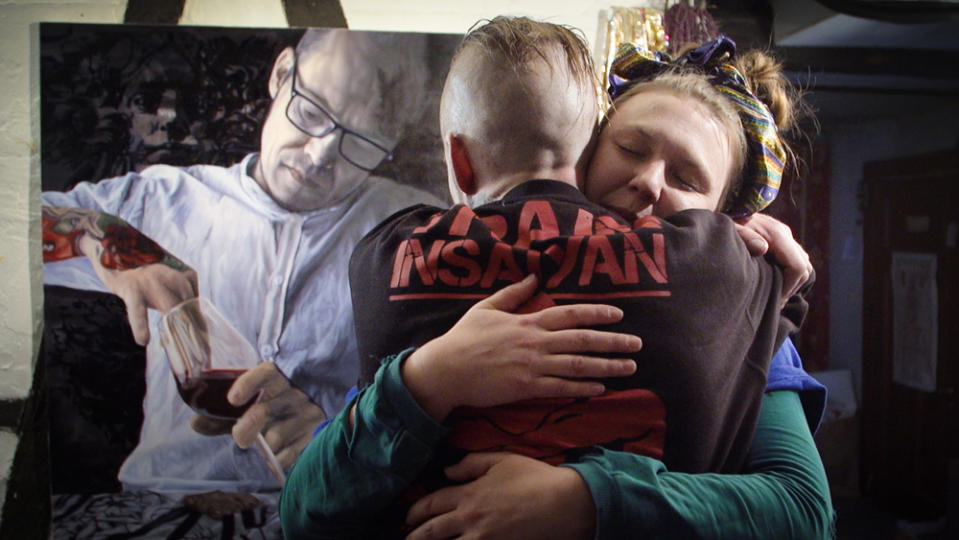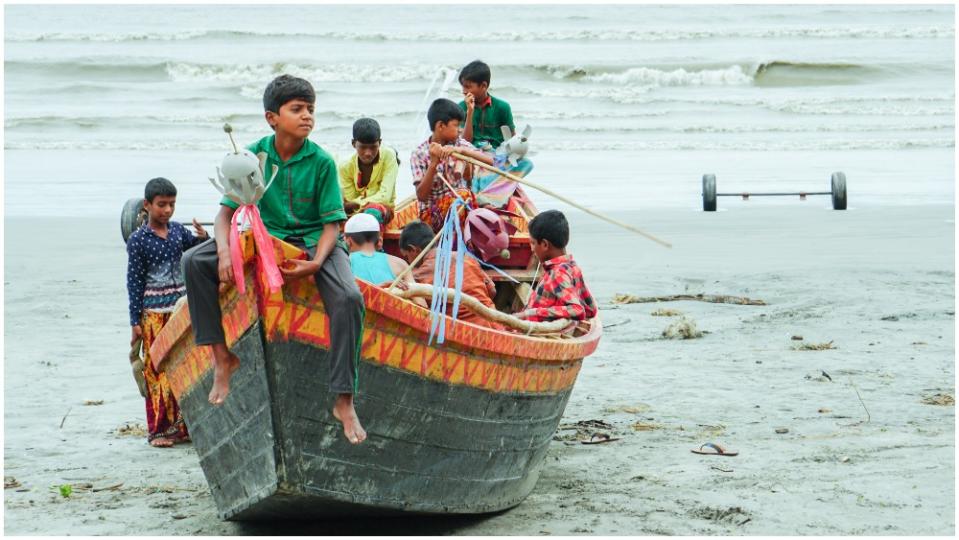Debut ARCA Arts Film Fest Captures the Glory, Tragedy of Extraordinary Art and Great Artists

The rich, varied and enticing lineup of Uruguay’s inaugural ARCA Intl. Film Festival underscores one fact from the festival’s get-go: In commercial terms, art-themed movies are not necessarily a backwater niche, reserved for high-brow aesthetes.
MSNBC Films won what is described as an intense bidding war to secure rights to JR’s “Paper and Glue”; Sony Pictures Classics acquired U.S. rights to animated heist caper “Ruben Brandt, Collector,” Zeitgeist Film/Kino Lorber took those to “Beyond the Visible – Hilma af Klint”; further titles are handled by doyens of arthouse film or documentary sales such as Films Boutique (“Last and First Men”) and Deckert Distribution (“Caveman–The Hidden Giant”).
More from Variety
Uruguay Launches Arts Film Festival ARCA and Stunning New Modern Art Museum
Uruguay Boosts Rebates for International Shoots, Co-Productions
12 Companies Driving Growth in Uruguay's Expanding Production Sector
That market punch is no coincidence. For ARCA’s open air big screen sessions, “we’ve chosen titles to appeal to a broad public, fiction titles, or documentaries which are attractive for their subjects or form, or even an animated feature such as ‘Ruben Brandt, Collector,’ which closes the festival,” says ARCA director Mercedes Sader.
Art-themed movies also lie on a powerful axis, linking two tried-and-tested plays for large audiences in cinema theaters and on platforms alike: Character-driven storytelling and a way into the contemporary or other Zeitgeists.
Many ARCA doc titles focus on individuals whose driving emotions are hyperboles of what makes anyone tick: Passion, obsession, ambition, a desperate attempt to battle poverty or, in the case of artists, the gut obstinate need to create.
Protagonists can be extraordinarily complex. Hilma af Klint, for example, painted what look for most of the world like its first abstract paintings in Stockholm in 1906, years before Kandinsky.
But for the painter herself, they symbolised spiritual forces. Discouraged by a (male) art authority from exhibiting, she hid her abstract work for much of her life, and instructed in her will that it should not be shown for 20 years after her death.
“These are people and artists with strong personalities, larger than life figures who are so tenacious that they become examples for the art world and examples for life,” says Sader. The artists’ fate – af Klint or Helene Schjerfbeck’s for example – resonate down to this day, she argues.
Artists’ success – or lack of it – also says much about the vagaries of social advance and artistic innovation: How art like science sprinted ahead of a conservative establishment at the turn of last century to the extent that pioneering women artists were completely ignored (af Klint) or downplayed (Helene Schjerfbeck); or how groundbreaking art was created by geniuses who were thoroughly dyed in the wool in political terms (Diego Velázquez); or how artists may harness media (Banksy); or art just might drive economic growth (“White Cube”) or can be enrolled to extraordinary effect in films for which it was never intended (the monumental brutalist Spomenik sculptures in the Balkans, used to suggest creations from a future civilisation in “Last and First Men”).
The extraordinary role which art can play in life can be mind-bending. Canadian designer Bruce Mau, the subject of one ARCA title, was asked to redesign Mecca; architect Oscar Niemeyer inspired Brasilia, a “cosmo-futurist” city built in the late ‘50s, packed with gleaming modernist architecture. Now people have to live in it.
“It’s hard for people to live in another person’s dream,” a voiceover comments in “A Machine To Live In,” an impressionist portrait of Brasilia 60 years on.
ARCA Intl. Film Festival 2022 Main Competition Lineup:
“A Machine To Live In,”(Yoni Goldstein & Meredith Zielke, U.S.)
Chicago-based visual artists Zielke and Goldstein’s “visual poem to the utopian imagination,” they say, which mixes stunning shots of Brasilia’s retro futurist architecture, much from Oscar Niemeyer, encounters with its inhabitants and voiceover texts, many from novelist Clarice Lispector. An essay on the spiritual transcendence of architecture and the downside of modernism.
“Así Pasamos,” (Diego Fernández Pujol, Uruguay)
The third feature from Fernández, following hard on the heels of 2021 “The Broken Glass Theory,” Uruguay’s Oscar entry and a box office smash hit, a portrait of the exuberant painter and graphic artist Javier Gil, drawing on 20 years of his uninhibited home movies and video self-portraits.
“Banksy Most Wanted,” (Seamus Haley, Aurélia Rouvier, France)
A chronicle of anti-establishment artist Banksy’s biggest hits – the shredding of “Girl With Balloon,” Dismaland theme park, the Mobile Lovers gift to a Bristol youth club – speculating on his identity and arguing his genius in a social media age.
“Beyond the Visible – Hilma af Klint,” (Halina Dyrschka, Germany, Austria)
A revisionist portrait of Swedish artist and medium af Klint who began to paint huge paintings of colourful seemingly abstract forms in Stockholm in 1906 predating Kandinsky, Mondrian et al by years. Her achievement was never recognised in her lifetime nor for decades after her death. A Zeitgeist Film/Kino Lorber U.S. release.
“Caveman–The Hidden Giant,” (Tommaso Landucci, Italy, Switzerland)
The first feature from Italy’s Landucci, a depiction of sculptor Filippo Dobrilla’s masterpiece, a marble colossus sleeping giant sculpted in a cave in the Apuan Alps, over 2,000 feet underground. The work embodies Dobrilla’ genius and lifelong contradictions, Landucci argues. Sold by Deckert Distribution.
“El Cuadro,” (Andrés Sanz, Spain)
A doc debate movie offering a panoply of interpretations of the real meaning of Diego Velázquez’s “Las Meninas,” or whether the painting’s essence lies in its meaning, which may reflects Velázquez’s somewhat unworldly desire of ennoblement, specialist Jonathan Brown has argued.
“Helene,” (Antti Jokkinen, Finland)
A biopic from Jokkinen (“The Midwife,” “The Resident”) of Helene Schjerfbeck, Finland’s foremost painter, narrating over 1915-23 her re-discovery, first solo exhibition and tragic love for the art critic Einar Reuter. Schjerfbeck is played by Laura Birn, the Finnish star of Jokkinen’s Oscar submission, “The Purge.”
“Hidden Away,” (“Volevo Nascondermi,” Giorgio Diritti, Italy)
A bio-doc from Diritti (“There Will Come a Day,” “The Man Who Will Come”) of the mentally challenged and mistreated mid-century naive painter Antonio Ligabue embodied faithfully by Elio Germano in a performance which won him best actor at the 2020 Berlin Festival. Sales handled by Rai Com.

Courtesy of Chico de Luigi
“Hugo in Argentina,” (Stefano Knuchel, Switzerland)
The second part of director Knuchel’s trilogy on the larger than life groundbreaking graphic novelist Hugo Pratt, creator of the “Corto Maltese” adventure comic books, chronicling Pratt’s intense life from when he lands in Buenos Aires in 1950 and fulfils his promise while leading what Knuchel calls a “crazy relationship with life.”
“La Intención del Colibri,” (Sergio de León, Uruguay)
The love story between painter Ulises Beisso, who died in 1996, and his partner Juan Arrospide, explained by the latter 25 years later as he and León, who filmed Beisso’s last exhibition in 1996 as a very young cineaste, prepare a new show, recuperating Beisso’s then pioneering erotic art. Beisso and Arrospide encouraged Leon to study film. In another full circle, “La Intención del Colibrí” marks Leon’s feature debut.
“Last and First Men,” (Jóhann Jóhannsson, Iceland)
Arguably the most original movie in the whole Arca lineup, the only directorial work by revered Icelandic composer Jóhannsson, narrated by Tilda Swinton in measured tones as she sends a message from the last survivors of humankind two billion years into the future. Meanwhile, Sturla Brandth Grøvlen ’s cinematography captures in dramatic 16mm B&W, gigantic, angular monuments reaching up into the sky. “A ravishing 70-minute audiovisual essay on human mortality, extinction and legacy,” ran a Variety review.

Courtesy of Films Boutique
“Mau,” (Benjamin and Jono Bergmann, Austria)
A doc feature portrait selected for 2021’s SXSW of Canadian Bruce Mau, a massive social change optimist who applies design to takes in stadiums, Coca-Cola, cities and the psychological makeup of Guatemala. An Autlook Filmsales title.
“Paper & Glue,” (JR, U.S.)
Acquired by MSNBC Films in June in what is reported to have been an intense bidding war and directed by visual artist and Oscar nominee JR, co-director with Agnes Varada of “Faces Places,” a record of JR’s passion for plastering huge images of people in the impoverished places where they live. World premiering at its Tribeca Film Festival premiere and qualifying for Academy Award contention.
“Ruben Brandt, Collector,” (Milorad Krstic, Hungary)
A Sony Pictures Classics U.S. pickup and Locarno Piazza Grande breakout, animated feature mixes an often brutal heist caper and homage to film noir and fine art as psychotherapist Brandt, attacked in nightmares by figures from 13 of the world’s most famous painting, hires clients to steal the masterpieces. “A stylish, fast-paced animated thriller for adults,” Variety announced. International distribution handled by HNFF World Sales.
“The Lost Leonardo,” (Andreas Koefoed, Denmark, France)
“The most improbable story that has ever happened in the art market,” says one commentator of doc feature, turning on “Salvator Mundi,” dubbed a male Mona Lisa, which become the most expensive painting ever sold, going under the gavel for $450.3 million. While the painter’s authenticity is still fiercely disputed, the deal underscores that money not art now rules the art market, Koefoed argues.
“The Painter and the Thief,” (Benjamin Ree, Norway)
The story of the extraordinary friendship between Czech artist Barbora Kysilkova and the junkie thief who stole two of her artworks from her first solo show. “Incredible…. A stranger-than-fiction friendship story in which vérité techniques produce unbelievable results,” a Variety review ran. Neon announced in Nov. 2020 that it was developing a remake with Studiocanal and Blueprint Pictures. Another Autlook Filmsales movie.

Courtesy of Autlook
“The Salt in Our Waters,” (Rezwan Shahriar Sumit, Bangladesh, France)
A 30-something sculptor settles on a remote island in the Ganges Delta, but soon clashes with the local village chief as, fruit of climate change, fishing trawl become increasingly meagre. Sumit’s feature debut supported by Spike Lee — who mentored Sumit at NYU Tisch and created a writing grant for the development of the screenplay. Sales agent is Film Republic.

MyPixelStory
“Walking on Water,” (Andrey Paounov, U.S., Italy)
Screened on Jan. 3 as a prologue to Arca proper, a doc-feature on Christo who with wife Jeanne-Claude, shrouded the Reichstag or construct fabric gates in Central Park or, in one of his last installation, constructing fabric covered platforms to create a floating walkway across Italy’s Lake Iseo, an installation of stunning beauty, making for a film that “delights in capturing the act of creation,” Variety enthused in a review.
Sales represented by CAA Media Finance.
“White Cube,” (Renzo Martens, Netherlands, Belgium, Democratic Republic of the Congo)
A fascinating social experiment in which artist and filmmaker Martens follows up his polemical “Enjoy Poverty” by encouraging workers on a Congo palm oil plantation to make sculptures of themselves which are exhibited and sold in the West, allowing the workers to buy back land. The experiment seems successful. A study of the challenge of turning art into a local economic driver, which played in IDFA competition in 2020.
Sign up for Variety’s Newsletter. For the latest news, follow us on Facebook, Twitter, and Instagram.

